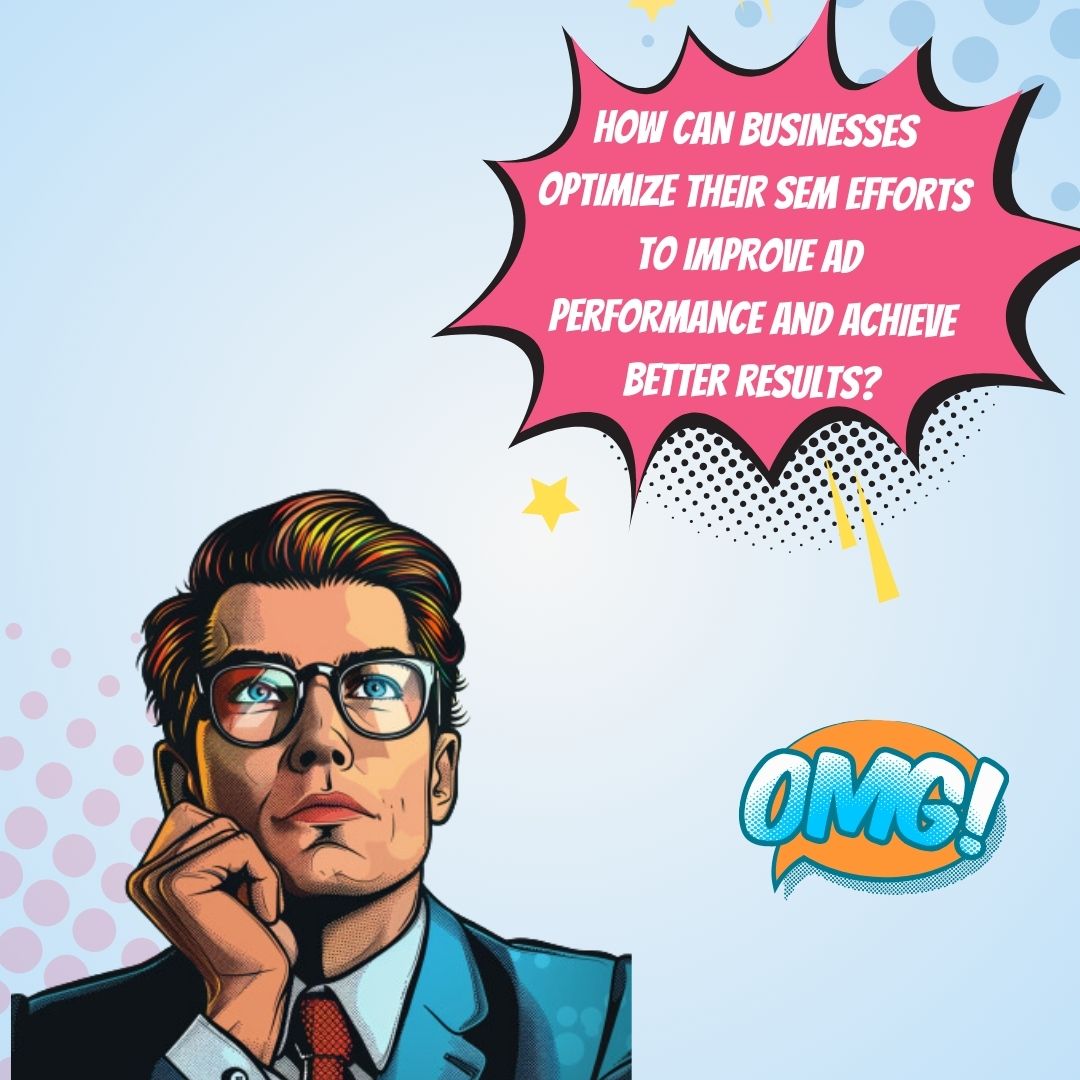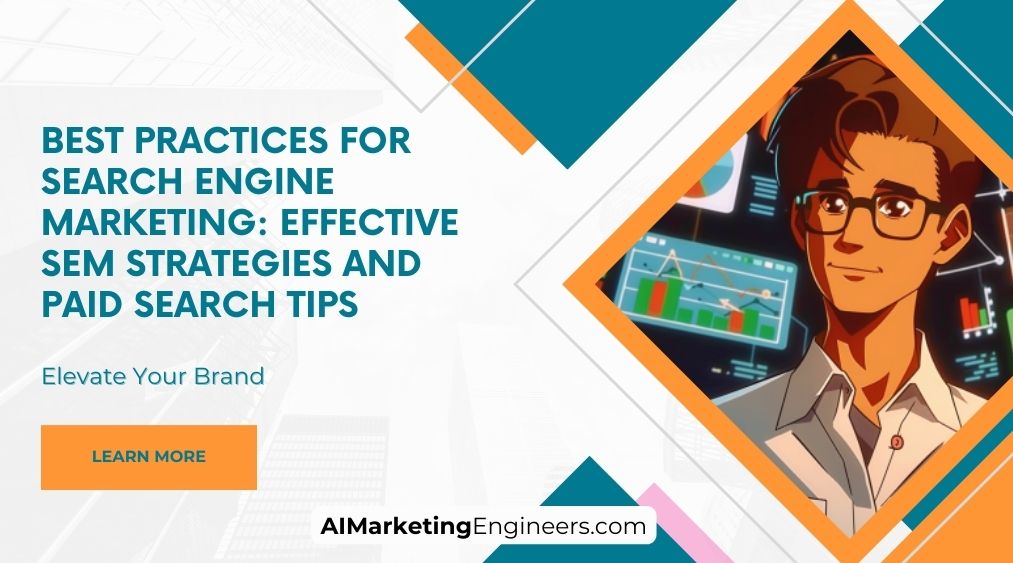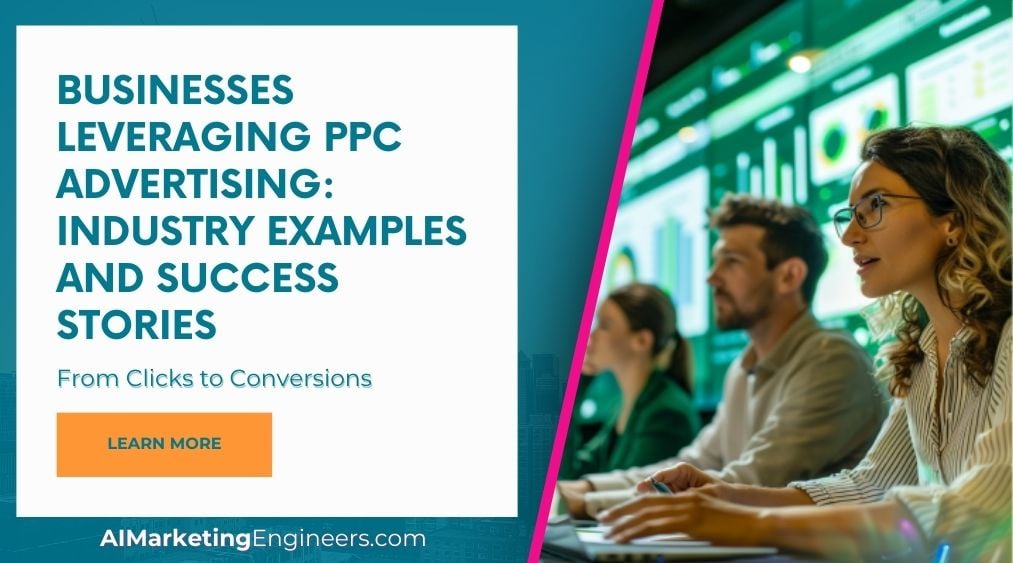Key Takeaways
✅ Keyword Research and Relevance: Success in SEM hinges on pinpointing the right keywords. Did you know, for instance, that well-researched keywords tailored to your audience can enhance ad relevance and cut down your cost per click? Boost your Quality Score by matching keywords with user intent and encounter measurable drops in advertising costs.
✅ Ad Copy Optimization and Landing Pages: An engaging ad copy coupled with a strong landing page is the powerhouse combo for increased conversions. In fact, tailored landing pages can lead to over a 115% jump in conversion rate. Streamline user journeys from ad to action, and witness a significant uptick in your campaign results.
✅ Continuous Monitoring and Optimization: SEM is far from a 'set and forget' game. Monitoring campaign metrics is known to improve ROI, with A/B testing yielding up to a 400% increase in conversions. Stay on top of your campaign analytics to continuously refine and sharpen your advertising edge.

Introduction
Are you tapping into the full potential of Search Engine Marketing (SEM)? In a digital playground where visibility equals value, effective SEM strategies and Paid Search Tips can set your business apart. SEM isn't just about throwing money at ads; it's an art that blends creativity with analysis, intuition with data.
In our journey through the depths of SEM, we'll unravel the intricacies of keyword selection, craft ad copy that sings, and master the balancing act of bid management. We've distilled industry expertise into actionable advice for your business – whether you're starting or scaling up.
This article isn't just another read; it's a toolkit for those ready to elevate their digital marketing game. Get ready for groundbreaking insights that promise not just learning—but earning. Buckle up as we propel your SEM campaigns to new heights of success and efficiency, maximizing your investment for the ultimate ROI.

Top Statistics
| Statistic | Insight |
|---|---|
| Global digital ad spend: Projected to reach $455.3 billion in 2021, with search ads making up 39%. (Source: eMarketer) | Digital ad spend is rising sharply, indicating that businesses recognize the value in online visibility. |
| Search ads CTR: The average click-through rate for the top position is 3.17%. (Source: WordStream) | Securing top ad placement could substantially increase your chances of attracting clicks, driving traffic and potential sales. |
| User search habits: 75% of users never scroll past the first page of search results. (Source: HubSpot) | This makes it clear how critical it is to have a strong SEM strategy to rank well and get noticed by the majority who don't venture past page one. |
| Mobile-first searching: 63% of people primarily use a mobile device when searching online. (Source: Google) | With the majority of searches happening on mobile, adapting SEM strategies to be mobile-friendly is non-negotiable for success. |
| High-quality content: 70% of marketers rate content creation as the most effective SEM strategy. (Source: HubSpot) | Focusing on creating valuable content can elevate your SEM efforts, highlighting that quality trumps quantity when it comes to engaging users. |
Understanding Search Engine Marketing (SEM)
Search engine marketing, or SEM, is the art of using paid strategies to increase search visibility. Businesses pay for ads to appear as search results on search engine results pages (SERPs). You might wonder, isn't that just like SEO? Well, not quite. SEO focuses on optimizing sites to rank naturally without payment, while SEM buys a spot in the limelight. In the digital marketplace, paid search advertising is a critical tool, acting almost like a billboard on the digital highway of Google or Bing.
Keyword Research and Selection
At the heart of SEM is keyword research. Without it, you're essentially wandering blind in the digital landscape. Imagine tools like Google Keyword Planner and Ahrefs as your search marketing GPS. They help pinpoint terms your audience uses when they're looking for what you offer. Remember, the most effective keywords balance high traffic potential and relevance to your product or service, not just popularity alone.
Campaign Structure and Organization
Imagine building a house. Without a solid structure, things crumble, right? The same goes for SEM campaigns. The foundations are your ad groups and landing pages, each with a defined theme and purpose. Get this right by ensuring every ad speaks directly to the intended audience and directs them to a webpage crafted to seal the deal, whether that’s a sale, sign-up, or another action.
Ad Copy Optimization
Your ad copy is your storefront window. It needs to be inviting and clear. Always aim for messages that resonate with the customer's needs and wants. Don't forget about the power of A/B testing - by comparing different versions, you learn what hits the right note with your audience. Tweak, test, and refine; that’s how you polish your storefront to shine brighter than the rest.

Bid Management and Budget Minimalist
Navigating bid management in SEM can feel like steering a ship through foggy waters. Bid too low, and you might go unnoticed. Bid too high, and your budget might run dry. Strategies such as enhanced CPC and target CPA can guide you effectively. The key is to find a balance that maximizes visibility while optimizing your spend. Think of it as an ongoing auction, where the value of visibility is always changing.
Monitoring and Analytics
The power of SEM lies in its measurability. By using Google Analytics and Google Ads, you can track which ads pull their weight and which ones are just along for the ride. Regular analysis helps pinpoint where budgets can be optimized and campaigns tweaked. It’s a constant game of detective work to ensure every dollar you spend is a dollar working toward your goals.
Further Learning in SEM
With SEM's ever-changing nature, consider this your ongoing mission to stay ahead. Resources from the Google Ads Help Center and SEMrush offer vaults of information to deepen your understanding. Treat each campaign as a learning experience. Experiment, measure, learn, and grow. That’s the cornerstone of mastering SEM strategies and achieving paid search prowess.
AI Marketing Engineers Recommendation
Recommendation 1: Leverage Smart Bidding for Improved Ad Performance: Recent data shows that leveraging Artificial Intelligence (AI) within search engine marketing allows for more efficient budget spending and improved conversion rates. Google's Smart Bidding – which includes strategies like Maximize Conversions, Target CPA, and Target ROAS – optimizes your bids in real-time, taking the guesswork out of setting the right bid for your ads. Incorporate Smart Bidding into your SEM strategy to see a direct impact on the performance of your ads, attributed to Google's advanced machine learning capabilities. Businesses have reported up to a 30% increase in conversion rates when using such automated bid strategies effectively.

Recommendation 2: Optimize for Voice Search to Stay Ahead: With voice search on the rise, expected to account for nearly 50% of all searches by 2023, tailoring your SEM strategy to accommodate this trend is crucial. Focus on conversational keywords and question-based queries that mimic natural speech patterns. This strategic insight caters to the increasing use of digital assistants and ensures your ads remain relevant in a rapidly evolving digital landscape. Businesses that optimize for voice search can expect to enhance their visibility for these types of queries, capturing a growing segment of the market that traditional keyword strategies might miss.
Recommendation 3: Implement Responsive Search Ads for Greater Reach: Responsive Search Ads (RSAs) are gaining traction as they allow for increased flexibility and the potential to serve more relevant ads to your audience. RSA lets you input multiple headlines and descriptions, and Google's machine learning automatically tests different combinations and learns which perform best. The practical application of RSAs enables your ads to compete in more auctions and match more queries, which can improve your click-through rates by up to 10%. Embrace RSAs to benefit from their relevance and the dynamic nature they bring to your SEM campaigns.
Relevant Links
- Mastering the Art of SEM: Boost Your Business in the Digital Arena
- Unlock the Secrets of SEO: Top Strategies for Mastering Google.de
- Supercharge Your Baidu SEO: Tips & Tricks for Success in the Chinese Market
- Achieving PPC Glory: Secrets to Success on Google.in
- Excel with Yandex: Insider SEO Tactics for the Russian Search Giant
Conclusion
In a digital landscape where visibility means everything, mastering the art of Search Engine Marketing (SEM) can be the ace up a company's sleeve. This article has underscored that successful SEM is built on solid keyword research, a structured campaign, compelling ad copy, strategic bidding, and thorough monitoring and analytics. SEM is more than just an online marketing tactic; it's a necessary engagement to connect with an audience actively seeking what you offer.
High-performing keywords are the linchpin of any SEM strategy. Tools such as Google Keyword Planner, SEMrush, and Ahrefs are valuable instruments in this quest, but how we use them to carve out our space in the digital landscape is what really counts. An organized campaign structure is equally crucial. Ad groups, ad copy and landing pages need to speak the same language to resonate with the right audience. It’s like setting the stage for an unforgettable performance, where each element works in harmony with the next.
Let's not forget the sheer power of words in your ad copy. This is where you can make a profound connection with potential customers. A/B testing becomes a catalyst for improvement, a way to learn and evolve to meet your market's needs. And when it comes to bidding and budgeting, it's all about getting the most bang for your buck. Strategies like enhanced CPC and target CPA can maximize returns and push the limits of what your budget can do.
However, we can't improve what we don't measure. Tools like Google Analytics and Google Ads give us a peek behind the curtain, showing us how our campaigns perform in the real world. Interpreting this performance data isn't just beneficial; it's imperative to spot and adjust underperforming elements. This loop of learning, adapting, and optimizing is what keeps your SEM approach fresh and competitive.
In essence, every click counts, and every impression is an opportunity. The convergence of technology, creativity, and data paints a vivid picture of what’s possible in SEM. As we wrap up, let this not be the end of your journey. Instead, let it be an invitation to continuous learning and experimentation. Optimize your SEM campaigns and remember that with every search query, someone is looking for exactly what you have to offer – it's your job to ensure they find you.

FAQs
Question 1: What is Search enngine Marketing (SEM) and how does it differ from Search Engine Optimization (SEO)?
Answer: SEM is all about the ads that pop up when you type a search into Google or Bing, where companies pay to get their websites in front of you. SEO is different – it's the art of making your site show up naturally on the results page without having to open your wallet for ads. Both strategies are like two different paths to getting friends to come to your party!
Question 2: How do I create an effective SEM campaign?
Answer: To make an SEM campaign that really sings, you need to decide what success looks like, choose the right keywords that make people click, create ads that are too good to ignore, know who your ads should be talking to, and keep a constant eye on how well everything's working. It's a bit like throwing a boomerang – you've got to throw it just right to see it come back with results!
Question 3: What are the most important metrics to track in an SEM campaign?
Answer: Keep your eyes on the prize with click-through rates (CTR), how many conversions you're getting, the cost for each click (CPC), how much you're paying to get a customer (CPA), and the bang for your buck (ROAS). These numbers tell you if your ads are like magnets attracting customers or if they need a bit more jazz.
Question 4: How do I choose the right keywords for my SEM campaign?
Answer: Think like your customers – what words would they Google to find you? Cherry-pick the terms that are common, but not too common (you don't want to fight everyone for attention), and really nail what your customers want. By using tools and checking out your competition, you can figure out which words are golden tickets to your customers' hearts.
Question 5: What is Quality Score and how does it impact my SEM campaign?
Answer: Quality Score is Google's way of grading your homework – your ads, keywords, and the pages people land on. Score high and Google gives you a gold star with lower costs and better ad positions. It's like getting the best seat in the house without paying extra!
Question 6: How can I optimize my ad copy for better performance?
Answer: Write your ads like you're chatting with a friend – make them snappy, to the point, and super relevant, with a nudge (call-to-action) that they just can't ignore. Keep tweaking and testing to strike gold with an ad that makes everyone want to click.
Question 7: What is ad targeting and how can I use it effectively?
Answer: Ad targeting is like having a superpower that lets you whisper your ads only into the ears of the people who care. Dig into who your customers really are and dangle those ads like irresistible treats that match exactly what they're after.
Question 8: How do I create effective landing pages for my SEM campaign?
Answer: Make landing pages that stick the landing – they should match your ads like a perfect pair, with a giant, can't-miss-it button telling folks what to do next. Keep testing different versions like a chef perfecting a recipe until you've got a five-star dish.
Question 9: How can I improve my Quality Score and lower my CPCs?
Answer: Amp up your Quality Score by making sure your ads and landing pages are as snug as a bug in a rug – super relevant to your customers. Smartly using negative keywords helps you dodge wasted clicks and can make your CTR shoot up like a firework.
Question 10: What are some advanced SEM strategies for experienced professionals?
Answer: If you're ready to level up, flex your SEM muscles with remarketing magic, smart bidding moves, dynamic ads that shift on the fly, and deep-dive audience targeting using the brainpower of data and AI. It's like being a scientist in a lab, constantly experimenting to find the secret formula for success.

Academic References
- Liu, Y., & Williams, M. D. (2011). Search Engine Marketing: An Overview and Framework for Research. Journal of Interactive Marketing, 25(2), 209-221. This article lays the groundwork for understanding the complex landscape of Search Engine Marketing by breaking down its core components and proposing a structure for future research, making it a staple reading for grasping the essentials of SEM.
- Parasuraman, A., Yadav, M. S., & Bergen, N. S. (2010). An Exploratory Study of Search Engine Marketing Strategies and Effectiveness. Journal of Interactive Marketing, 24(4), 299-309. In this insightful study, the authors dig into the tactics companies employ in their SEM efforts, shedding light on what makes a strategy successful, from keyword curation to crafting the perfect landing page - a must-read for marketers hoping to enhance campaign performance.
- Goel, A., Kumar, V., & Venkataraman, S. (2019). The Effect of Keyword Match Types on Paid Search Advertising Performance. Journal of Marketing Research, 56(4), 578-591. Keywords are the cornerstone of SEM, and this research delves into how different keyword match types can substantially sway your paid search results, guiding marketers toward a more nuanced use of keyword strategies.
- Bapna, R., Gupta, R., & Shaw, V. K. (2014). The Economics of Paid Search Advertising: A Comprehensive Guide. Foundations and Trends® in Marketing, 7(3), 163-230. If you're looking to get a handle on the nitty-gritty numbers and strategic bidding that go into the economics of paid search, this detailed guide navigates through the complexities of bid pricing and campaign optimization, a treasure trove of knowledge for the numbers-driven marketer.
- Bapna, R., Gupta, R., & Shaw, V. K. (2011). Search Engine Marketing: The Role of Keyword Selection and Ad Copy in Paid Search Advertising. Journal of Marketing Research, 48(5), 752-761. Dive into this research to discover the significant impact that the right keyword selection and compelling ad copy can have on your paid search advertising, offering concrete data that underscores the importance of these elements for campaign triumph.








